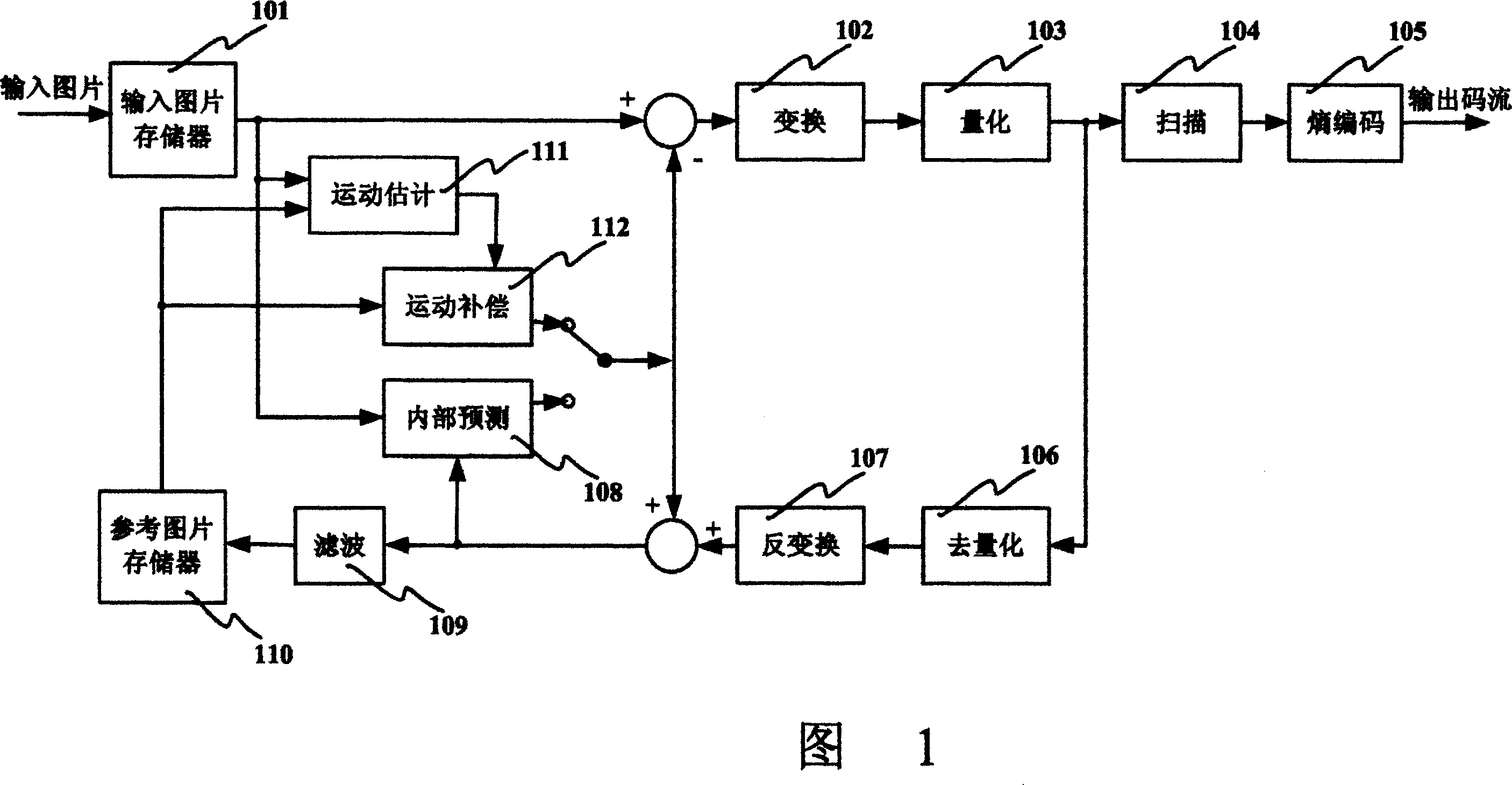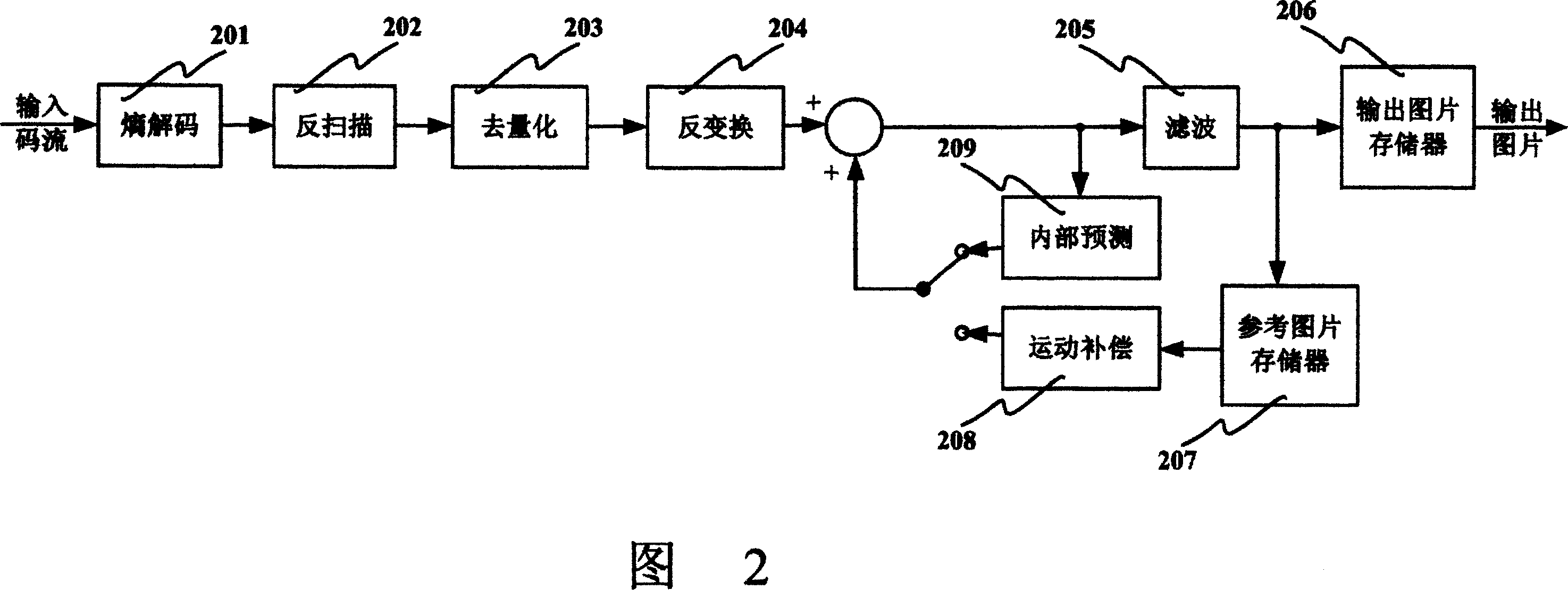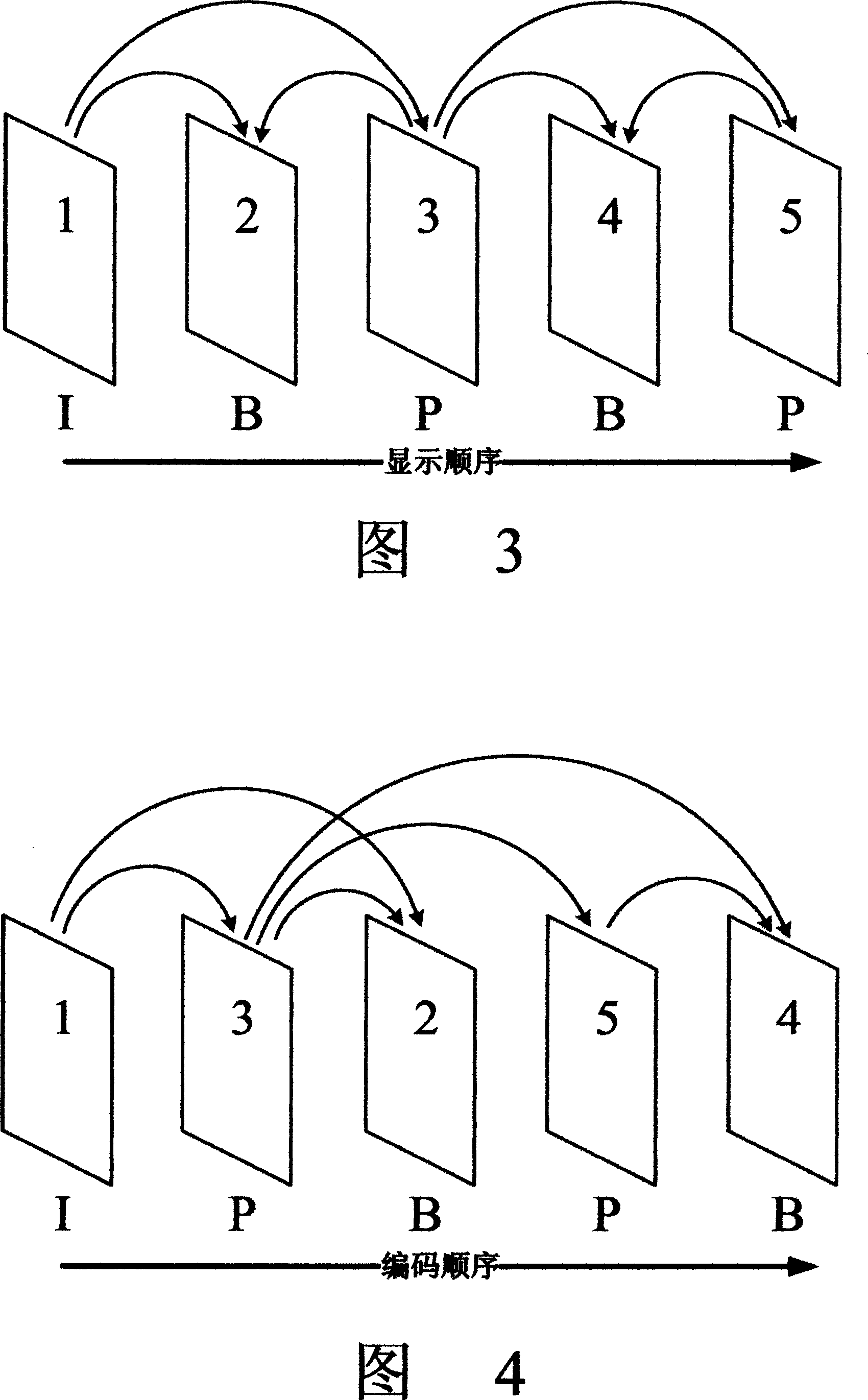Coding and decoding method and device for dynamic image, and computer readable record medium
A technology of dynamic images and coding methods, which is applied in the field of coding and decoding of dynamic images, and can solve problems such as poor effect.
- Summary
- Abstract
- Description
- Claims
- Application Information
AI Technical Summary
Problems solved by technology
Method used
Image
Examples
Embodiment 1
[0036] The reference picture is divided into pixel units for storage, and the encoder builds a memory address table for the pixel units. The operation of accessing the pixel unit is realized by looking up the memory address table. FIG. 8 shows an embodiment of a pixel unit memory address table. According to the number of the pixel unit, its starting address in the memory can be found, and then the addresses of other pixels can be obtained. Figure 9 is a flowchart of this process. The first step is to obtain the number of the pixel unit and the index of the reference picture; the second step is to choose whether to read or store the pixel unit; the third step is to determine the memory address table according to the index of the reference picture if it is to read, and according to the pixel unit The number looks up its starting address in memory, and accesses it. If it is stored, the pixel unit is stored in the memory, and then the address table is updated.
Embodiment 2
[0038] FIG. 10 is an embodiment of another pixel unit memory address table. The first column 401 is an identifier. When it is equal to 1, the address of the pixel unit is stored in the table; when it is equal to 0, the motion vector of the pixel unit is stored in the table, and it can be calculated according to the motion vector its memory address. For example: each row of the reference picture has M 16×16 macroblocks, which are stored in the memory according to the scanning order of the macroblocks. The starting address of the reference picture is A. If the coordinates of the current pixel unit are, the abscissa is 3 macroblocks, The address of the first pixel of the macroblock with four vertical coordinates and the motion vector of (1, 2) is equal to A+(4*M+3)*256+16*2+1. Figure 11 is a flowchart of this process. The first step is to obtain the number of the pixel unit and the index of the reference picture; the second step is to read or store the pixel unit; the third ste...
Embodiment 3
[0040] Fig. 12 is an embodiment of the present invention in which an encoder reads pixel units of a reference picture in the case of multiple reference pictures. The first step is to read the memory address table of the pixel unit; the second step is to use the identifier in the address table, such as 401 in Figure 10, to determine whether the pixel unit is the same or similar to the pixel unit of other previous reference pictures; In the third step, if there is no identical or similar pixel unit, read the pixel unit for motion estimation, otherwise ignore the pixel unit during motion estimation.
PUM
 Login to View More
Login to View More Abstract
Description
Claims
Application Information
 Login to View More
Login to View More - R&D Engineer
- R&D Manager
- IP Professional
- Industry Leading Data Capabilities
- Powerful AI technology
- Patent DNA Extraction
Browse by: Latest US Patents, China's latest patents, Technical Efficacy Thesaurus, Application Domain, Technology Topic, Popular Technical Reports.
© 2024 PatSnap. All rights reserved.Legal|Privacy policy|Modern Slavery Act Transparency Statement|Sitemap|About US| Contact US: help@patsnap.com










